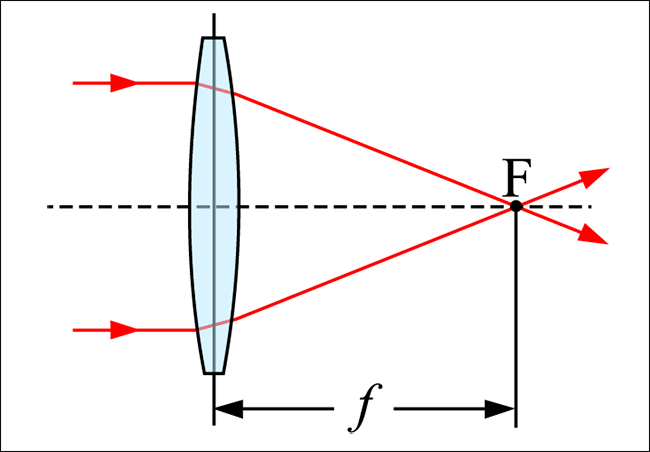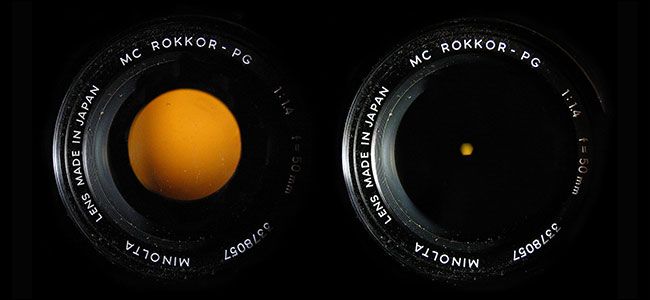Quick Links
The mirrorless camera revolution was meant to bring about smaller, lighter camera gear but in reality, camera manufacturers have just taken the opportunity to make bigger, better lenses. The why comes down to the physics of lenses.
Manipulating Focal Length is Complicated
The focal length of a lens—which we’ve looked at in depth before—is the distance between the rear nodal point and the focal point. In a simple convex lens, it’s the distance between the center of the lens and the focal point. However, no camera lens is a simple convex lens; they’re all “compound lenses” which are lenses made from a combination of individual lenses called “lens elements.”
Cameras have a “flange focal distance” that is the distance between the lens mount and the sensor. On Canon’s DSLRs, for example, it’s 44mm. The problem for camera manufacturers is that manipulating focal length is complicated and generally involves adding more lens elements that make things bigger and heavier. The reason Canon’s EF 40mm lens is their smallest is that it so closely matches the flange focal distance and thus requires very few lens elements.
The further you move away from the flange focal distance, in either direction, the bigger a lens is going to be. A 600 mm lens doesn’t need to be 60cm long, but for it not to be 60cm long—which it would be if it were a simple convex lens—the optical design is complicated. It’s the same with an 11mm fisheye lens.
There is a small sweet spot, between about 24mm and 50mm where it’s possible to make lenses that aren’t as big but, for everything else, the optics of manipulating focal length are a significant barrier to miniaturization.
Aperture is a Hard Limit
Aperture is a function of focal length. When we talk about f/5.6, what we’re saying is that the lens iris is open to the focal length divided by 5.6. For example, a 50mm at f/2 has a lens iris opening of 25mm; at f/8, the iris is open to 6.25mm.
While this isn’t a concern for wide angle lenses, it very quickly becomes an issue for fast telephoto lenses. Take the incredibly popular Canon 70-200 f/2.8: at 70mm the lens iris is 25mm wide, but at 200mm it’s 71.5mm. This means that assuming infinitely thin materials, the minimum possible size of the front element of the lens is about 72mm—in reality, it’s 88.8mm—and there’s just no way to make it smaller.
No matter what Canon—or Nikon or Sony—wants, they physically can’t make a 200mm f/2.8 lens with a front element smaller than 80mm or so. The laws of physics won’t budge.
Technical Developments are an Issue
A lot of old lenses just weren’t very good. They had charm, but the autofocus was off, there was regularly heavy vignetting or distortion, and the image wasn’t sharp across the entire frame. Modern lenses have solved a lot of these problems by adding more lens elements, which of course, also add more size and weight.
Similarly, modern developments like powerful image stabilization add yet more weight to already heavy lenses.
And let’s not forget zoom lenses. A prime lens will (almost) always be smaller and lighter than a zoom lens that covers the same focal length because they’re much simpler. Zoom lenses take, you guessed it, more lens elements and moving parts.
Really, Physics is the Problem
What the issue boils down to is that the laws of physics are a pain in the ass.
Optics is a well studied and complicated field. Manipulating light so that far off objects appear closer or close up objects appear further away, while blurring backgrounds or keeping everything in focus, and maintaining a high level of image quality just requires big, heavy lenses.
The dream of professional cameras getting smaller is just that for the time being: a dream.



